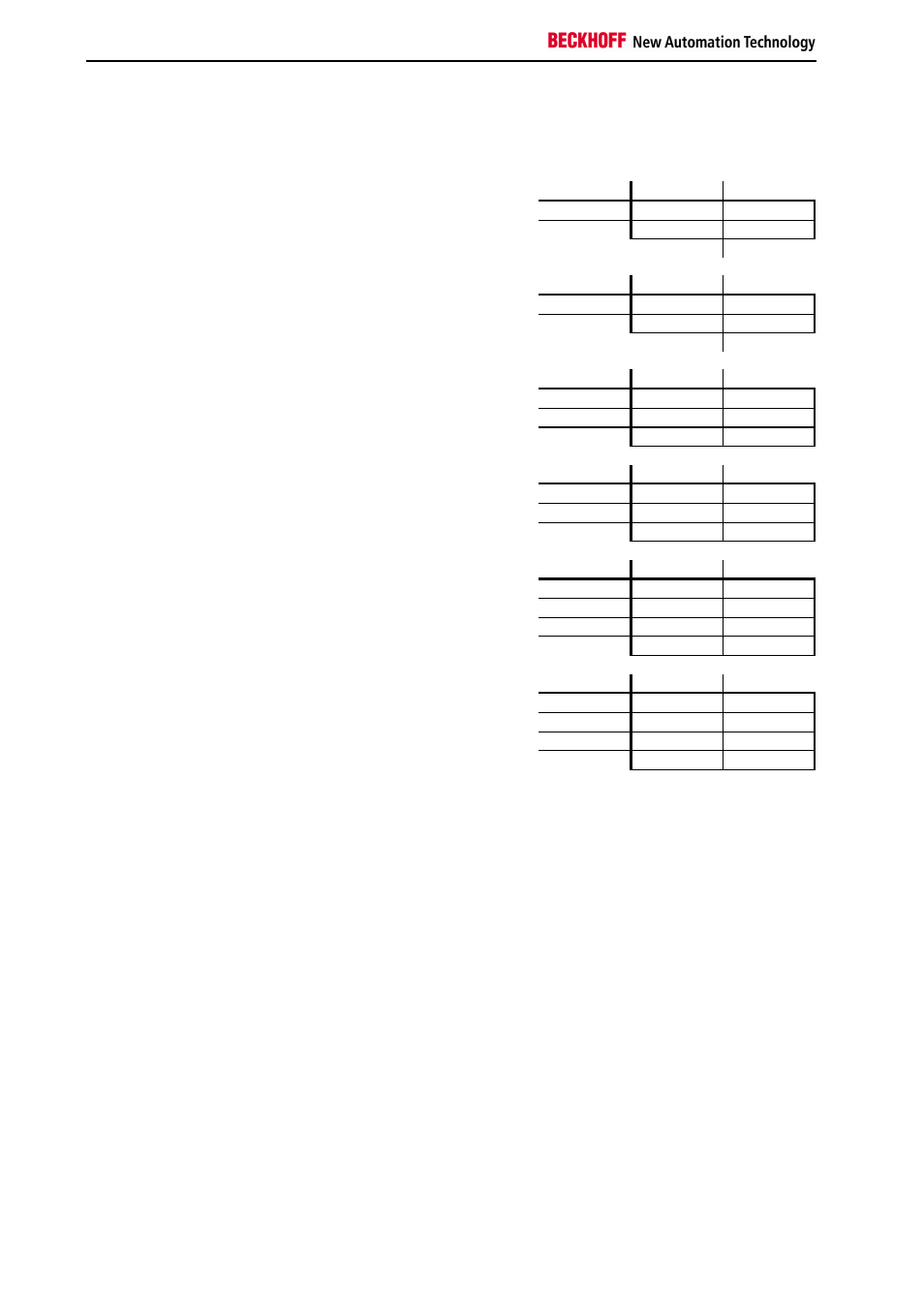BECKHOFF KL1501 Benutzerhandbuch
Seite 18

Anhang
16
KL1501
Alternatives Format
Im alternativen Format wird die KL1501 mit 4/6 Byte Eingangs- und 4/6
Byte Ausgangsdaten gemappt.
Bedingungen
Wort-Offset High Byte
Low Byte
0
D0
Cnt-CB/SB
1
D2
D1
Komplette Auswertung: nein
Motorola-Format:
nein
Word-Alignment:
nein
Bedingungen
Wort-Offset High Byte
Low Byte
0
Cnt-CB/SB
D0
1
D1
D2
Komplette Auswertung: nein
Motorola-Format:
ja
Word-Alignment:
nein
Bedingungen
Wort-Offset High Byte
Low Byte
0
Cnt-CB/SB
CB/SB
1
res.
D0
Komplette Auswertung: ja
Motorola-Format:
nein
Word-Alignment:
nein
2
D2
D1
Bedingungen
Wort-Offset High Byte
Low Byte
0
D0
CB/SB
1
res.
Cnt-CB/SB
Komplette Auswertung: ja
Motorola-Format:
ja
Word-Alignment:
nein
2
D1
D2
Bedingungen
Wort-Offset High Byte
Low Byte
0
res.
CB/SB
1
D0
Cnt-CB/SB
2
res.
res.
Komplette Auswertung: ja
Motorola-Format:
nein
Word-Alignment:
ja
3
D2
D1
Bedingungen
Wort-Offset High Byte
Low Byte
0
res.
CB/SB
1
Cnt-CB/SB
D0
2
res.
res.
Komplette Auswertung: ja
Motorola-Format:
nein
Word-Alignment:
ja
3
D1
D2
Legende
Komplette Auswertung:
Die Klemme wird mit Control- und Status-Byte gemappt.
Motorola-Format:
Es ist Motorola- oder Intel-Format einstellbar.
Word-Alignment:
Die Klemme liegt auf einer Wortgrenze im Buskoppler.
CB: Control-Byte (erscheint im PA der Ausgänge).
SB: Status-Byte (erscheint im PA der Eingänge).
Cnt-CB: Control-Byte im Prozessdatenaustausch.
Cnt-SB: Status-Byte im Prozessdatenaustausch.
res.: reserviert:
Dieses Byte belegt den Prozessdatenspeicher, hat aber keine Funktion.